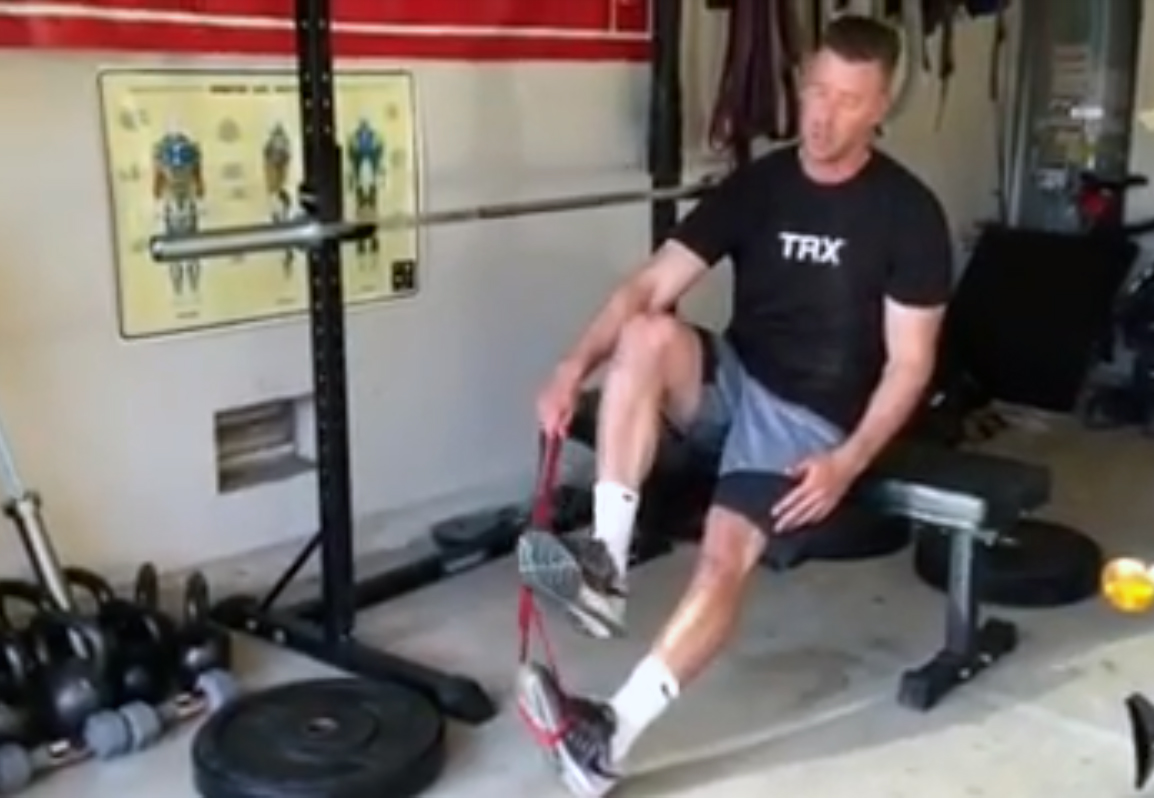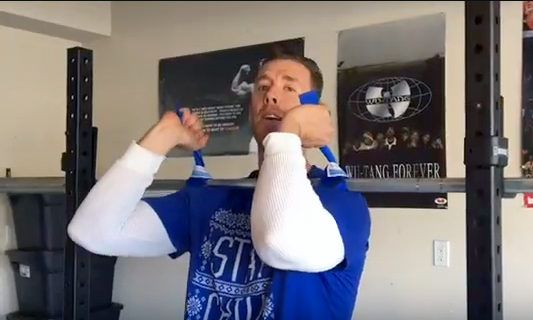Some reasons for knee tendonitis:
Lack of VMO strength
Lack of Mobility in ankles and hips
Lack of proper knee tracking in squat portion of jump
Lack of deceleration strength
In this article I’ll focus on lack of VMO strength (the muscles on the lower thigh that surround the top of the knee), which I think is the most common factor in knee tendonitis, especially for players making the jump from high school to college. These muscles are key being able to decelerate and jump, as well as absorbing force while landing. I often get hoopers from high school that are extremely explosive and can jump through the roof but, they can barely squat a 45 lb. bar with good form, and without knee pain. This is a recipe for disaster, as their bodies can create a ton of upward force but, when they land all of the impact goes to the knee. Over time this creates knee tendonitis (inflammation of the tendons around the knee) and, there’s nothing worse than seeing a young athlete hobble around the court hearing, “coach my knees are killing me”. It’s my job to get those legs strong so their bodies can handle the jumping, cutting, and overall demands of the season. The goal before season starts is to squat 1.5 to 2x your body weight for a 1 rep max going slightly past parallel. This ensures me that their legs are strong enough to handle the demands of the season.
Building Blocks:
For those explosive freshman that have trouble squatting, I like to front squat them until they can squat their body weight (on the bar) for 6 reps. I do this because front squats are a great tool to reinforce proper squatting mechanics, forcing you to keep a vertical posture because if your elbows drop so does the weight. It’s easier for athletes with tighter hips to get lower in a front squat than a back squat and the repetitions done in the front squat phase will actually work in opening their hips up. This way when they transition to back squats they’ll be smooth and solid. It also helps to keep the weight lighter. It’s easy to back squat heavy weight with bad form but, it’s almost impossible to front squat heavy weight with bad form. This ensures me that we are building the blocks slowly and deliberately, one rep at a time. Once they can front squat their body weight for reps then I’ll transition them to back squats and we will start the climb to squatting 1.5-2x their body weight. This is just one example of what goes into our fall training phase.
After our fall lifting and conditioning phase, which is usually 6-8 weeks of 4 days a wk lifts, 2 days a wk conditioning my guys are strong and in shape, ready to take on the season. The next challenge is to maintain this strength throughout the season, especially for your big minute guys 30+ a game. It’s all about finding a balance of workload to recovery.
Proper Recovery to me means:
Rest-Getting 8 hrs. of sleep a night. TV off, iPad off, social media off, just solid good ole fashion sleep.
Hydration and Eating healthy-Staying hydrated, half your body weight in ounces of water daily, making healthy eating choices, “if you eat potatoe chips you’ll play like potatoe chips”.
Treatment- Using cold tubs after long practices or games, getting massages, foam rolling and stretching.
Maintenance Lifts-Getting lifts in at the right time of the week ensuring proper recovery before games. Keep lifts simple in season and if you do change the lift know that your players are going to be sore until their bodies adapt to the lift.
Preventative Maintenance and Activation Exercises- Done daily before practice to help muscle activation. Movement prep exercises done daily to keep potential problem areas under control.
If there isn’t a balance then eventually your players will “under recover” and flare ups with knee tendonitis and breakdowns will begin which will lead to losses.
Which brings me to my 5 preventative knee tendonitis exercises that done in season, will help to prevent knee tendonitis from flaring up, maintain leg strength, improve activation, and will keep your hoopers from saying, “coach my knees are killing me”.
My 5 In Season Knee Tendonitis Relief Exercises
- Backwards walk on the incline treadmill 1×20 steps
- Reverse sled drag 1×40 ft.
- Knee band pressouts 1×20 ea.
- Small rom leg press 1×20 ea.
- Eccentric leg extension 1×20 ea.
Players that have a history of knee tendonitis should do this routine daily, the closer it is done to the start of practice the better. This will ensure that the muscles around the knees are warm and ready for the demands of the game.
As you can see there are many factors that can create knee tendonitis in your basketball players but, if you take the time in the preseason to become stronger, make a conscious effort for recovery, and use these 5 exercises, I feel confident that your players knees will feel better, stay strong throughout the season, and overall help your players to keep playing at a high level all season long.
Thanks for reading
Create Greatness!
 ScottThom.com Elite Basketball Strength Training & Player Development
ScottThom.com Elite Basketball Strength Training & Player Development

